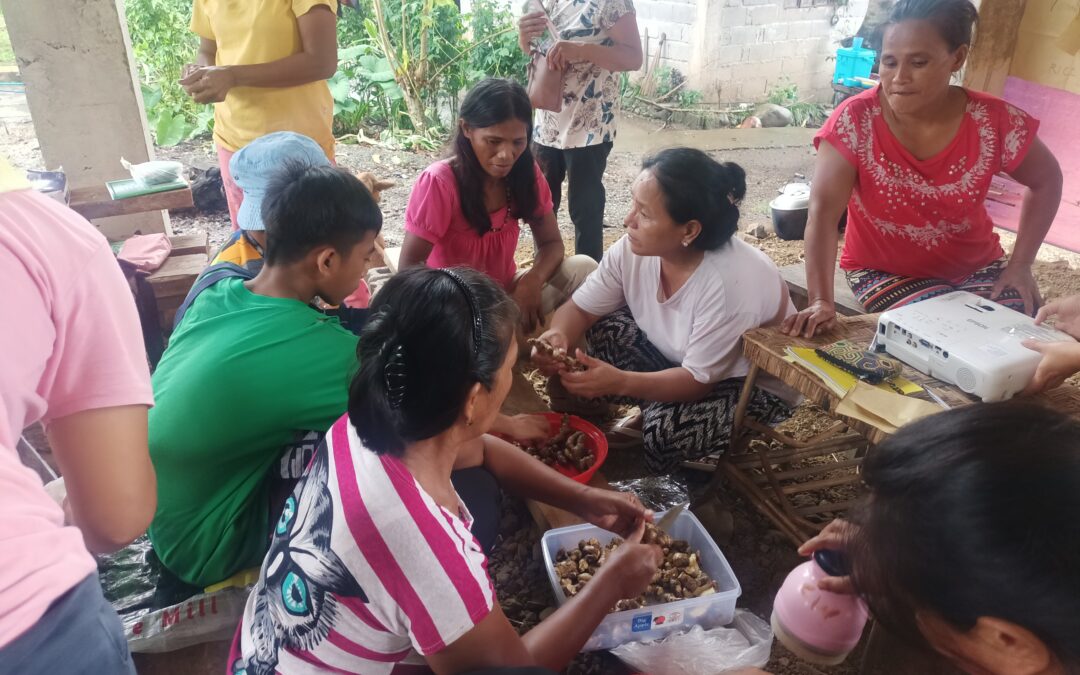On the morning of August 17, 2024, a group of farmers gathered at Sitio Mosimos, Barangay Dupag to attend a two-day training on Alternative Pest Management. The objective of the activity was to develop alternative and sustainable methods of pest control. The training was conducted by the staff of Cordillera Disaster Response and Development Services (CorDisRDS) Inc., an organization that provides services to vulnerable sectors of the community, particularly those affected by natural disasters.
The activity was attended by more than 20 individuals who are members of three different organizations: TUPAC, DUPPO, and TMTC.
As lifelong learners, the participants requested training to address the recurring problem of pests in their rice fields and farmyards. Reducing the cost of farm inputs, which had long pushed them into financial difficulty, was also a key motivation. Additionally, they were eager to learn about the benefits of using traditional methods and techniques to produce their own organic fertilizers and pesticides. Their request was granted following their active participation in the PPI Training held at Sitio Tomiangan on June 29–30, 2024, which was also facilitated by CorDisRDS.
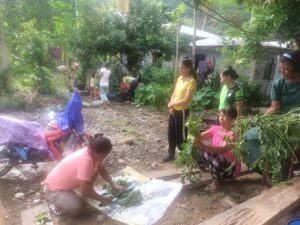
Participants chopping camote plants in preparation for fermented plant juice (FPJ) production.
Day One
The training began with an activity that highlighted participants’ expectations and allowed them to share their agricultural experiences and social issues affecting their livelihoods.
During the sharing, one participant expressed her determined expectation to complete the training and gain knowledge she could pass on to others. The training staff emphasized that sharing what they learn with others is also a learning experience in itself—one that fosters stronger community connections and more effective outcomes.
Ms. Levy Mangili, one of the training staff, challenged participants to strengthen their organizations by actively engaging in campaigns, such as lobbying with LGUs and other government agencies regarding their concerns.
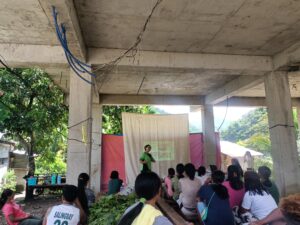
CorDisRDS team engaging participants with insights on the Sustainable Agriculture topic.
Following this, Mr. Reynold Wanagon of CorDisRDS gave an orientation on sustainable agriculture to help participants understand its core principles. This was followed by a hands-on workshop on making organic foliar fertilizers. The participants were divided into four groups, each facilitated by a member of the training staff. The workshop focused on producing organic fertilizers using locally available raw materials, including Indigenous Microorganisms (IMO), Fermented Plant Juice (FPJ), Fermented Fruit Juice (FFJ), and Kohol Amino Acid (KAA). Ingredients used included rice, ripe papaya, camote leaves, banana stem, and golden kohol, all mixed with a kilo of molasses for fermentation.
After completing the process, each group presented their outputs and explained the methods they used. To ensure better understanding, presenters used the local language and showed the actual raw materials in front of the audience. To cap off the day, the participants agreed to label their outputs and plan the activities for the following day.
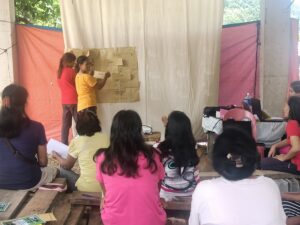
Participants actively engage during the sessions
Day Two
The second day of the activity focused on pest management. It began with Ms. Kim Lagyab reviewing the first day’s activities to refresh participants’ memory. The staff also expressed appreciation for the participants’ active engagement.
“Your active participation yesterday shows your true commitment to changing the mindset of relying on chemical pesticides,” one staff member said. With gentle smiles, they proceeded with the day’s agenda.
Ms. Mateth Basia one of the resource person and a staff of Center for Development Programs in the Cordillera (CDPC) a longtime partner of CorDisRDS, led a workshop to help participants compare traditional and modern farming methods. Results showed that modern farming is still widely practiced in the community, although a few farmers occasionally still use traditional methods. The group noted the increase in pest occurrences and the dangers of using chemical pesticides. Through open discussion, it became evident that over-reliance on chemical and synthetic inputs had led to soil degradation and the decline of traditional foods and practices like innabuyog.

Participants chopping camote plants in preparation for fermented plant juice (FPJ) production.
In response, Ms. Mangili provided safety measures for those still using chemical inputs. Ms. Basia then discussed alternative pest management (APM) strategies, emphasizing traditional methods such as pest identification, understanding life cycles, and crop rotation. Acknowledging that these practices are labor-intensive, Ms. Mangili stressed the importance of community collaboration to ensure their effectiveness.
To deepen participants’ understanding, another workshop was conducted in the afternoon. Participants were divided into three groups and tasked with making organic pesticide decoctions using chili fruits, tagumbao leaves, tobacco, ginger, garlic, and makabuhay stem—all accessible, proven materials for pest control. Each group then presented their outputs and discussed their preparation methods, which were based on CorDisRDS’s sustainable agriculture training materials.
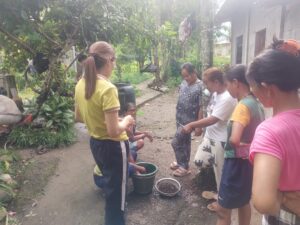
Participants preparing snails for Kuhol Amino Acid (KAA) production
To wrap up the event, time was allotted for planning and reflection to ensure all questions were clarified. Each participant was given a chance to share their thoughts. One remarked that the training was a timely and necessary intervention, as many farmers are unaware of the health risks associated with chemical pesticide use.
Mrs. Bilin Tongdo emphasized the need for caution when handling chemical pesticides, stating, “Though there are a few trainings conducted by the Department of Agriculture, they mostly focus on usage and application, not the risks.” She also expressed gratitude to the CorDisRDS staff for their efforts in bringing valuable knowledge to farming communities.
Another participant shared hope that the knowledge gained would be applied, noting that these practices were once common among ancestors.
Finally, Ms. Mangili again challenged the group to put their learnings into practice, warning against letting it become “just words on paper.” She reiterated that while the methods may be laborious, the success of sustainable agriculture depends on shared knowledge and collective action.
Article by: Reynold Wanagon

